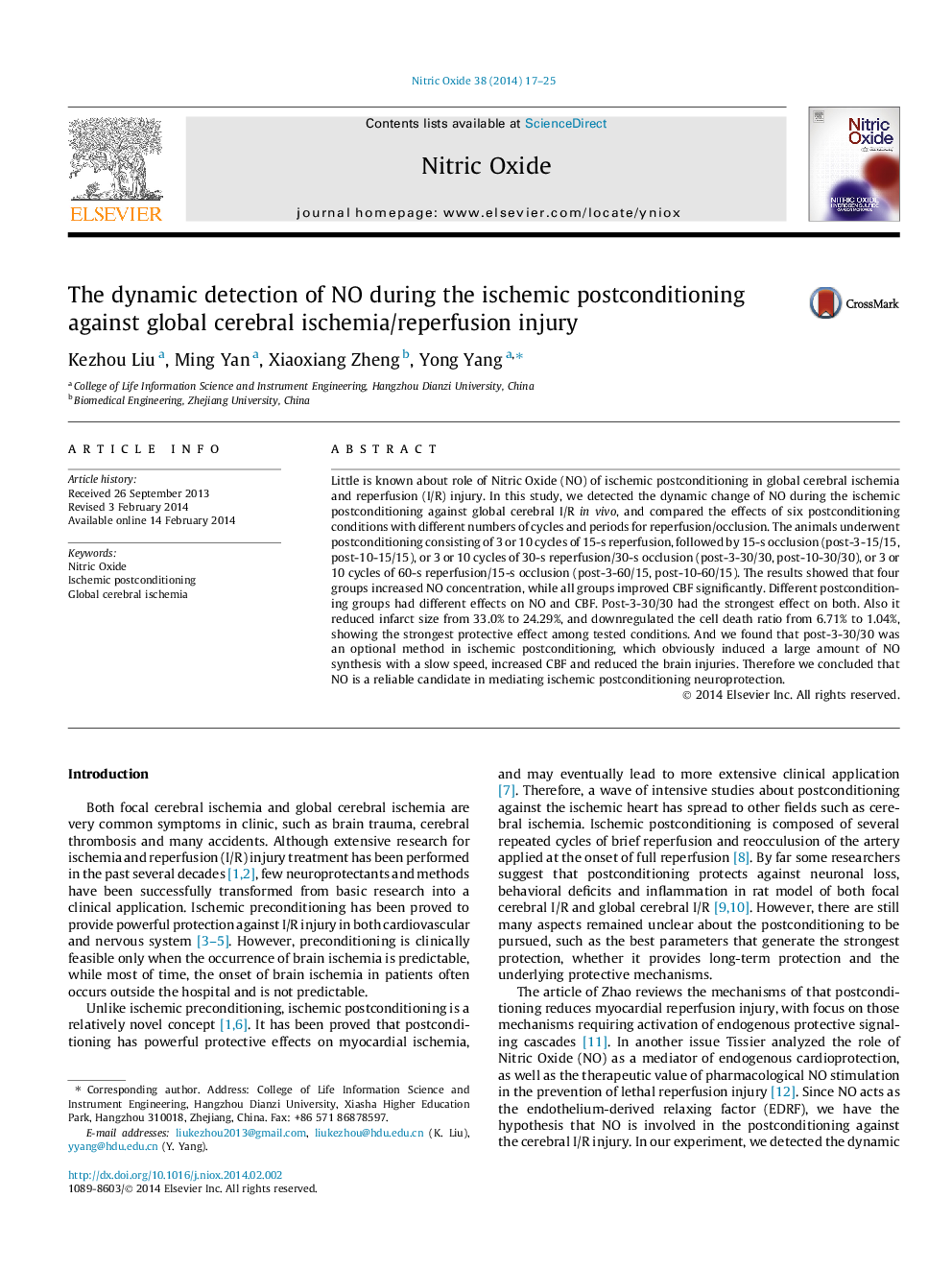| Article ID | Journal | Published Year | Pages | File Type |
|---|---|---|---|---|
| 2000644 | Nitric Oxide | 2014 | 9 Pages |
•We in vivo detected NO in rat hippocampus during the ischemic postconditioning.•We compared the effect of different postconditioning methods and got the best one.•The best postconditioning method induced large NO synthesis with a slow speed.•NO is a reliable candidate in mediating ischemic postconditioning neuroprotection.
Little is known about role of Nitric Oxide (NO) of ischemic postconditioning in global cerebral ischemia and reperfusion (I/R) injury. In this study, we detected the dynamic change of NO during the ischemic postconditioning against global cerebral I/R in vivo, and compared the effects of six postconditioning conditions with different numbers of cycles and periods for reperfusion/occlusion. The animals underwent postconditioning consisting of 3 or 10 cycles of 15-s reperfusion, followed by 15-s occlusion (post-3-15/15, post-10-15/15), or 3 or 10 cycles of 30-s reperfusion/30-s occlusion (post-3-30/30, post-10-30/30), or 3 or 10 cycles of 60-s reperfusion/15-s occlusion (post-3-60/15, post-10-60/15). The results showed that four groups increased NO concentration, while all groups improved CBF significantly. Different postconditioning groups had different effects on NO and CBF. Post-3-30/30 had the strongest effect on both. Also it reduced infarct size from 33.0% to 24.29%, and downregulated the cell death ratio from 6.71% to 1.04%, showing the strongest protective effect among tested conditions. And we found that post-3-30/30 was an optional method in ischemic postconditioning, which obviously induced a large amount of NO synthesis with a slow speed, increased CBF and reduced the brain injuries. Therefore we concluded that NO is a reliable candidate in mediating ischemic postconditioning neuroprotection.
